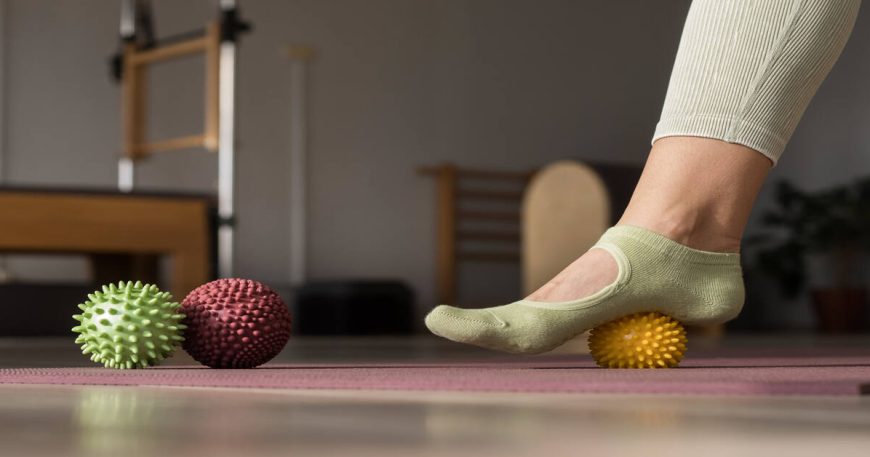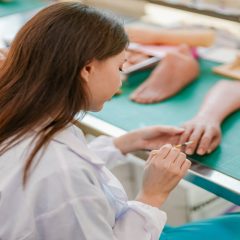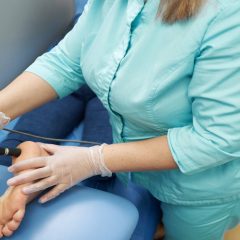
What Scientific Principles Underlie Optimal Foot Biomechanics?
Having healthy feet is a vital component of well-being that is not given the appropriate attention. The feet are the basis of our whole body, therefore, they are very vital in terms of mobility, balance and general health. Knowledge of the biomechanics of the foot can enlighten the complex facets in which our foot construction and operation have implicated in our health to avert damages and enhance output in our daily undertakings. This blog will explore the science of biomechanics, its role in the context of the health of the feet, and how biomechanics may be applied to improve the wellbeing of the feet.
Understanding Biomechanics
Biomechanics is the science of the mechanical laws of movement or structure of living things. Bio-mechanics is used in the context of foot health in the study of the functioning of the foot during different activities such as walking, running, and jumping. It is a science that integrates the concepts of physics, biology, and engineering and studies the interactions of forces on the musculoskeletal system of the body.
The human foot is a complex structure which comprises 26 bones, 33 joints and more than 100 muscles, tendons and ligaments. The positioning of these parts permits plenty of movement and flexibility. Biomechanics looks at the coordinated action of these structures insofar as shock absorption, stability and movement is concerned.
The Importance of Foot Health
Health of the feet is crucial due to a number of reasons. To begin with, feet support the whole body and carry the weight of the body. Weak feet may cause numerous problems such as pain, discomfort, and difficulty to move. Also, foot issues may have a ripple effect on other bodily organs and result in such conditions as knee pain, hip and even lower back pain.
Proper foot care is able to increase performance in sports and daily living. Athletes, especially, have to be highly attentive to their foot biomechanics because any malalignment and malfunction may cause injuries that can negatively interfere with performance. Knowledge in biomechanics can enable one to make effective choices on footwear, physical routines, and recuperation.
Key Biomechanical Concepts Related to Foot Health
1. Foot Structure and Function
The structure of the foot is such that it is flexible and stable. The foot arches such as the medial, lateral and transverse arches are important in shock absorption and weight distribution. A healthy foot will be able to adjust to different surfaces and activities, which would help to avoid injuries.
In the cases of the foot structure being affected, either flat feet, high arches or other deformities, it may cause biomechanical problems. Such as flat feet can lead to overpronation in which the foot is overly rolled inwards. This may cause the ligaments and the muscles of the foot and leg to be strained thus causing pain and discomfort.
2. Gait Analysis
One very essential element of biomechanics is gait analysis which is concerned with how we walk and run. Gait analysis may indicate that there are foot mechanics abnormalities that cause pain or injury. Professional gait analysis is usually performed by watching the movement of the foot during different movements and may be done with high tech equipment like motion capture, pressure sensors etc.
Knowing the gait patterns of a person, health care workers can determine underlying problems and prescribe the needed interventions, e.g., orthotics or the use of the particular exercises to restore the balance. This individualized treatment can have a great way of making people live a better life by having better feet.
3. Impact of Footwear
Shoes have a great impact on foot health and biomechanics. Poorly fitting or poorly supported shoes may make the existing foot issues worse or may cause new ones. As an example, high heels may cause changes in the normal position of the foot and pressure on the forefoot, which cause pain and deformation in the long run.
On the other hand, good shoes may improve the use of feet and biomechanics. Arch support and cushions combined with shoes that fit the foot and are supportive can assist in healthy foot mechanics and prevention of injury. In choosing shoes, the issue of foot type, level of activity, and other special requirements should be considered.
Common Foot Problems Linked to Biomechanics
Several common foot problems can be linked to biomechanical issues:
- Plantar Fasciitis: This is a condition that is inflammatory and is located on the bottom of the foot in the place of the ligament known as the plantar fascia. It is usually caused by an athlete by overpronouncing or ill-fitting shoes, resulting in heel and arch pain.
- Achilles Tendinitis: It is a disease that arises when the Achilles tendon, which holds the calf muscles and attaches them to the heel bone, gets inflamed. This problem can be caused by poor biomechanics like tightness of calf muscles or excessive heel strike.
- Bunions: These are bony swellings that occur on the bottom of the big toe, usually as a result of genetic and biomechanical mal-adaptations. The condition may be worsened by wearing tight or ill fitting shoes.
For a deeper understanding of these and other complex issues, you can explore our dedicated resource on podiatry foot conditions challenges.
Improving Foot Health Through Biomechanics
Understanding biomechanics can empower individuals to take proactive steps toward improving their foot health. Here are some practical recommendations:
1. Regular Foot Assessments
Foot evaluation by a qualified healthcare practitioner can also be performed regularly to help with the detection of biomechanical problems at an early stage. It might involve an in-depth assessment of the foot structure, gait, and a conversation on any pain or discomfort that is present.
2. Choosing the Right Footwear
Foot health is important and thus investing in well-fitted, high-quality footwear is important. Arch support, cushioning, and the activities under which the shoes will be used are some of the considerations to make. Orthotics can also be used in cases where a person has certain problems in their biomechanics.
3. Incorporating Strength and Flexibility Exercises
Foot health can be improved by incorporation of exercises that strengthen the feet muscles and also enhance their flexibility. Toe curls, calf raises and stretching activities are some of the activities that can be used to ensure that the biomechanics and general functions of the feet are enhanced.
4. Listening to Your Body
It is necessary to be mindful of your body and understand when something is wrong or hurts. Foot pain continues to be a problem, and it is better to seek professional assistance in good time and avoid even more serious problems in the future.
Conclusion
Biomechanics is an important aspect of learning about the health of feet and its effects on the general health. Exploring the complex mechanics of the foot, individuals may learn useful information about how to have healthy feet and avoid injuries. With routine examinations, the correct shoes on, and determination to stick to strengthening and flexibility measures, every person can do positive things toward the goal of attaining the best foot care. Finally, well-maintained feet lead to a healthier and more active lifestyle enabling one to perform the activities of his or her choice without any inconvenience.




